Sedum prominent: varieties, planting and care

The Sedum spectabile species has several hundred varieties, each of which is ideal for decorating the lawn and the surrounding area. Succulent has several botanical and popular names: wonderful sedum, "hare cabbage" or "live grass". Knowing some of the secrets of its cultivation, sedum will bloom until late autumn.

Description
Sedum is a perennial succulent, a type of flowering plant from the Tolstyankov family. Various varieties of this flower are widespread in Europe, Eastern China and Japan. In the wild, it is found in mountainous regions, on plains and sandy soils. The sedum is a rather large plant up to 80 cm high, although there are also small specimens. The buds are collected in inflorescences up to 25 cm in diameter. Flowers can have different colors depending on the variety. Also, the beginning and duration of flowering depends on the variety. The first petals can open in mid-May, some species continue to bloom until frost.
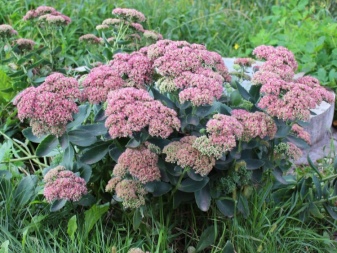
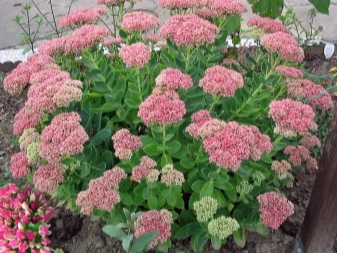
Flowers have not only high decorative qualities, but also a healing effect. The medicinal properties of sedum have made the plant especially popular with alternative medicine practitioners. Some varieties of stonecrop have sedative and analgesic effects. Decoctions and infusions of flowers relieve pain and calm the nervous system. Sedum leaves are juicy, fleshy, tightly covering the stems. The color of the leaves is from light green to maroon shade with a light grayish bloom. Closer to autumn, the stems and flowers of the plant acquire a richer color.
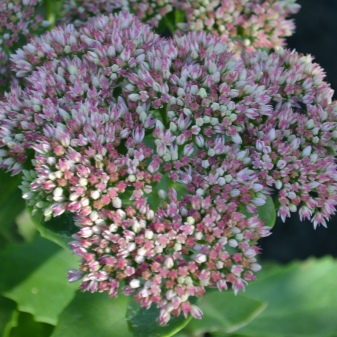
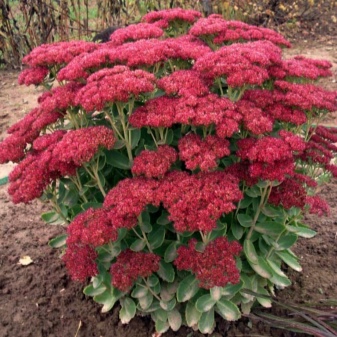
Perennial tolerates the neighborhood of other garden plants and temperature changes well. Due to this feature, it is used for landscaping large areas, using in single and group plantings.
Varieties
Various types and varieties of plants are used for landscaping areas. Flowers with white, pink and purple petals are very popular. Ornamental varieties that are widely cultivated and used in landscape design.
- "Brilliant" (Sedum spectabile Brilliant). This variety was the very first one bred by breeders in 1913. Tall shrub of 15-10 upright dense stems. During the flowering period, beautiful lush inflorescences are formed on each stem, the diameter of which can reach 25 cm.
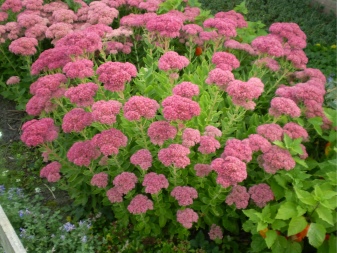
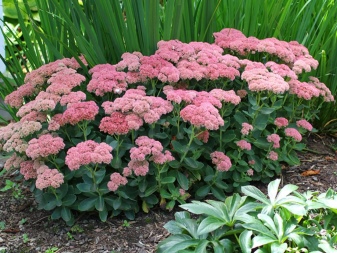
The color of the buds is dark pink, closer to the center - almost red. The plant tolerates frosts well down to -8 ° C. The unpretentious variety has a long flowering period - from mid-August to early November.
- "Karl" (Sedum spectabile Karl). The flower has erect shoots with a height of 47-50 cm. A distinctive characteristic of the variety is dense oval leaves, capable of accumulating moisture and nutrients, and resistance to frost. Thanks to these features, "Karl" can be grown on sandy soils with deep groundwater. Its flowering period is 80-90 days from early August to mid-October. The petals have a bright pink color, which becomes even more saturated closer to autumn.

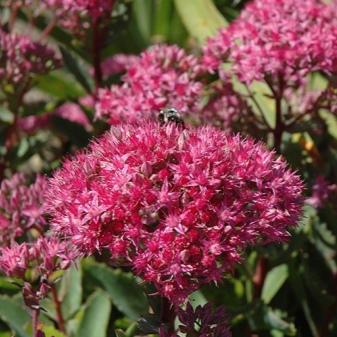
This beautiful ornamental plant is used by florists to create bouquets and flower arrangements. The plant prefers well-lit areas, but does not require regular abundant watering.It is used for decorating alpine slides, grown in mixborders, rockeries.
- "Stardust" (Sedum spectabile Star Dust). A shrub 40-60 cm high adorns the garden with snow-white flowers. The frost-resistant variety takes root well both in the shade and in sunny areas. Small buds bloom in mid-August and bloom until the end of September. In favorable conditions, the flowering period can last until mid-autumn.
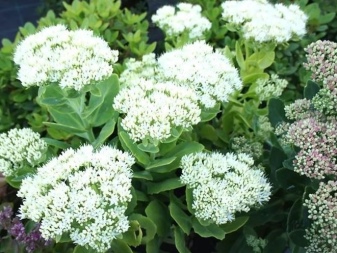

- "Matrona" (Sedum spectabile Matrona). The cultivar is polarized in popularity with gardeners due to its beautiful large pink-red buds and a long flowering period. Inflorescences, located on high (up to 60 cm) stems, bloom at the end of summer and bloom before the onset of frost. Perennial tolerates drought well and does not require abundant watering.
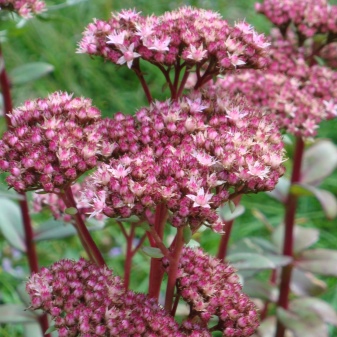
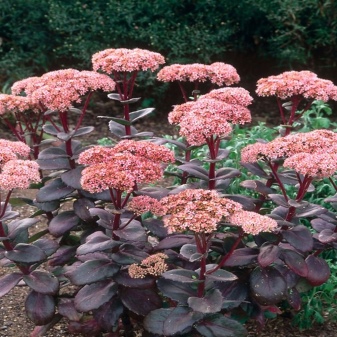
- "Frosty Morn" (Sedum spectabile Frosty Morn). The characteristic feature of this variety is the lush pale pink, almost white, flowers. Due to the bright color of dense large green leaves with a white bloom, the plant can be grown in single plantings. The bushes are compact, no more than 30-35 cm high, they are used to decorate flower beds, rocky gardens and alpine hills.

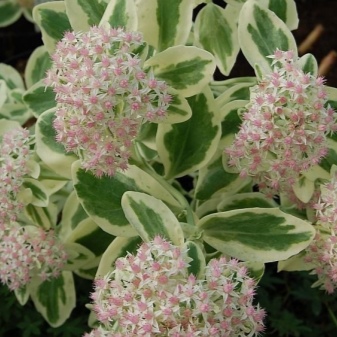
- "Iceberg" (Sedum spectabile Iceberg). Snow-white buds up to 15 cm in diameter are the hallmark of this variety. Iceberg prefers well-lit areas and can be grown as a single ornamental plant. The shrubs are compact, the height of the stems does not exceed 35 cm. The flowering period is the end of August.
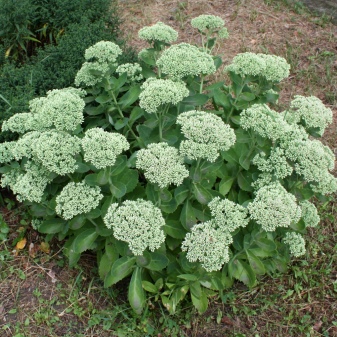
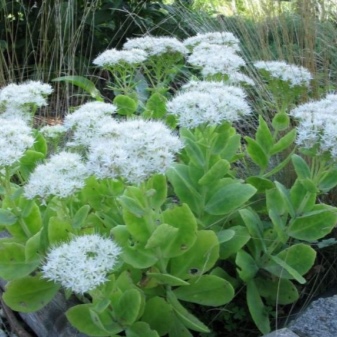
- Sedum spectabile September Glut. The September Flame is a bright frost-resistant flower that adorns the landscape until winter. Tall erect stems form a compact bush up to 50 cm high. The green color of the leaves with a light blue tint harmonizes well with dark pink buds. The flowering period of "Septemberglut" is from mid-September to the end of November. It goes well with wildflowers and cereals.
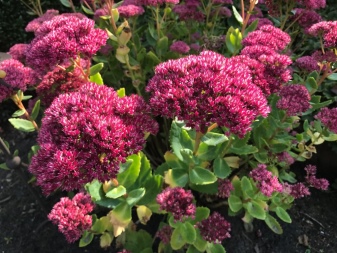
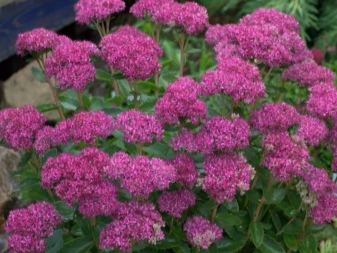
- Sedum spectabile Diamond Edge. A small compact shrub 35-50 cm high with pale pink buds blooms before the first frost. A distinctive characteristic of the variety is the red color of the stems and the fleshy leaves of a dark green color with a cream shade. It is used to decorate personal plots and is used in group plantings.
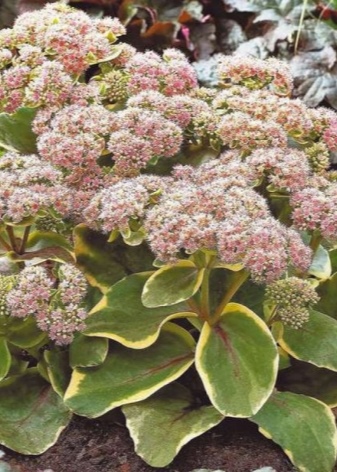
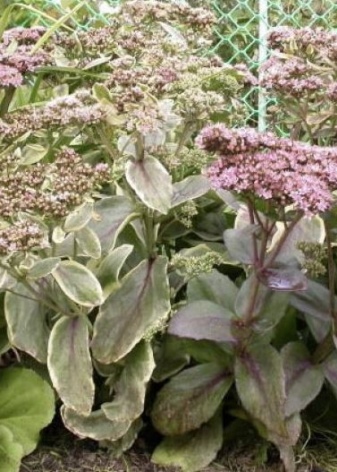
- "Variegata" (Sedum spectabile Variegata). A short shrub (up to 45 cm) with variegated light green leaves and pink-burgundy buds, collected in small inflorescences, loves good lighting and is resistant to an arid climate. Undemanding perennial care can bloom for 90-100 days, starting in September. The original color of the inflorescences and the ease of growing made the variety very popular with gardeners.

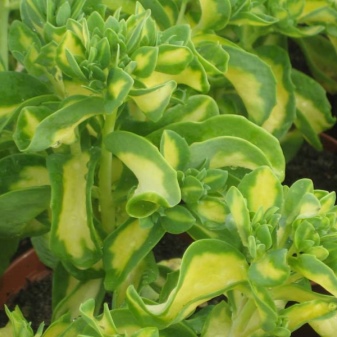
- "Purple Emperor" (Sedum spectabile Purple Emperor). A distinctive characteristic of this variety are beautiful dense purple leaves. "Purple Emperor" is a large, tall shrub with stems up to 80 cm wide. Massive large inflorescences with pink buds acquire an even richer color when grown on the sunny side.

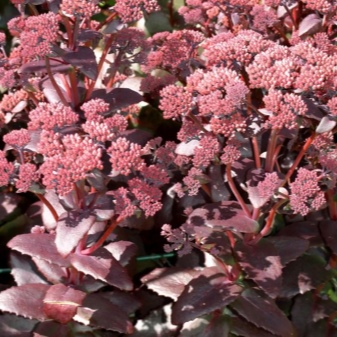
The flowering period begins in late July and lasts until mid-October. Due to their size and beautiful harmonious color, the flowers are widely used to decorate rocky gardens and alpine hills.
- "Red Cowley" (Sedum spectabile Red Cauli). Selective hybrid variety with bright red buds. Stems are tough, covered with blue leaves with a grayish bloom. The flower prefers sunny areas, but tolerates shade and partial shade well. The flowering period is 75-80 days from July to the end of September.

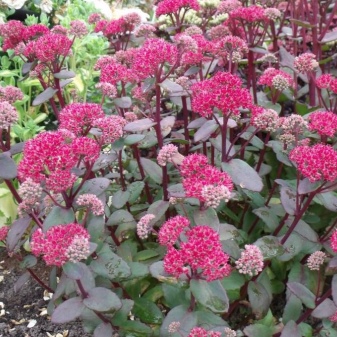
- "Xenox" (Sedum spectabile Xenox). A small bush no more than 35 cm high has bright purple-violet buds and leaves. The compact plant looks good in flower beds and in mixborders, can be grown in the shade.

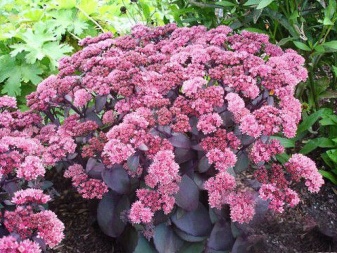
Popular varieties for group plantings and floristic compositions.
- "Neo" (Sedum spectabile Neon). A sprawling spherical shrub up to 60 cm high. Flowers of a lilac-pink hue are collected in false umbrellas.
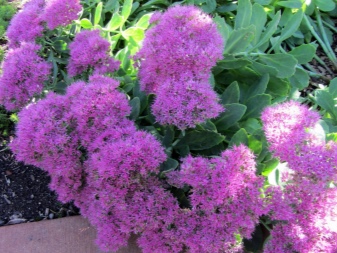
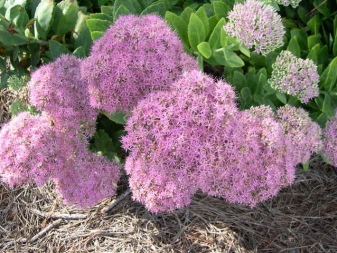
- "Carmen" (Sedum spectabile Carmen). A dense, low bush grows up to 30 cm in diameter. Due to its high decorative qualities, it is often used for landscaping large garden plots. Thick burgundy leaves and delicate pink flower buds go well with other varieties.
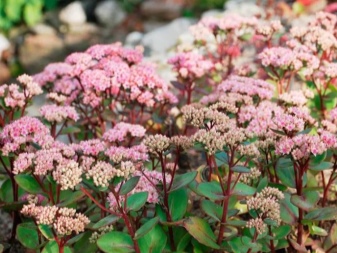
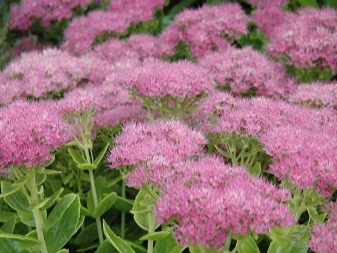
- "Autumn fire" (Sedum spectabile Autumn fire). A bush up to 50-60 cm in height with large pink-copper inflorescences has a long flowering period. The most cold-resistant variety that you can not cut for the winter.
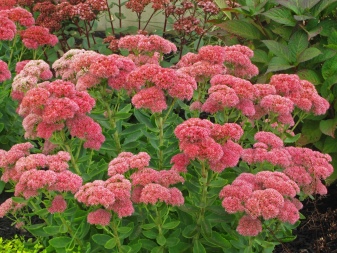
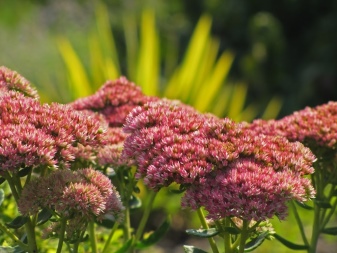
- Sedum spectabile Postman's Pride. The stems with purple leaves go well with the delicate pink color of the buds. Shoot height usually does not exceed 60 cm, so that the shrub can be planted in mixed plantings and near trees.
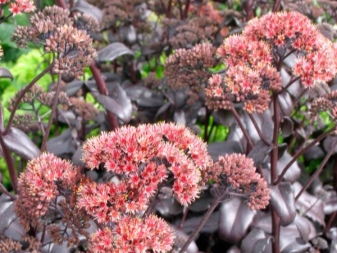
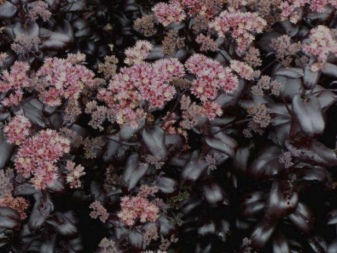
- "Rosneteller" (Sedum spectabile Rosneteller). The classic combination of delicate green leaves and bright pink blossoms has made this variety one of the most popular among florists. Small bushes 40-60 cm in height are among the first to bloom in early to mid-May. At the end of flowering, seed pods are formed in place of the buds, which can be used to propagate the flower.
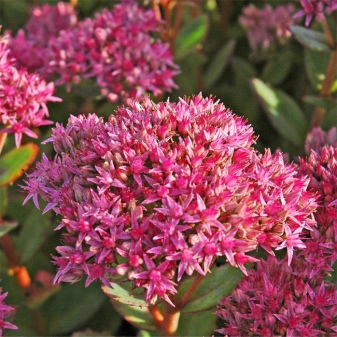
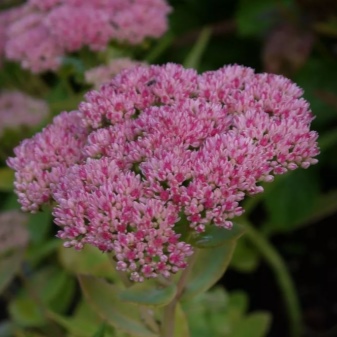
How to plant?
When choosing a place to grow sedum, it should be remembered that almost all of its varieties love sunny open areas. The unpretentious plant can be planted on clay and sandy soils, on plains and in mountainous areas. So that the perennial does not reduce its decorative qualities over time, it is recommended to provide it with drainage from brick chips or expanded clay. The plant does not tolerate excessive moisture and stagnant water.
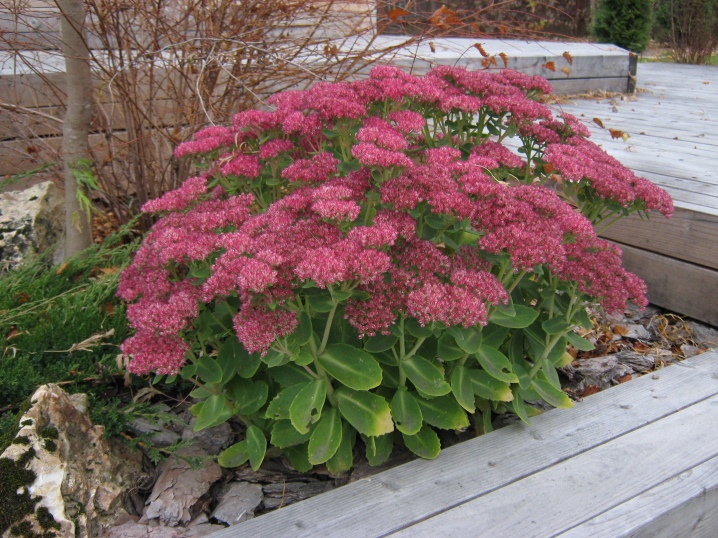
When choosing a place for its cultivation, it is recommended to avoid lowlands and places with a high occurrence of groundwater, otherwise the roots of the flower may rot. Sedum is planted in open ground in spring - at this time, active growth of all plants begins. At home, the flower can be planted in the winter, and in the spring, transplanted into the already warmed earth. The place needs to be cleared of weeds and the topsoil must be loosened. Succulent grows well in rocky areas, so light sandy loam is best suited for it.

The flower holes should be at least 20 cm apart, for large varieties the spacing should be at least 40 cm. At the bottom of the planting pit, you need to pour a handful of sand or expanded clay, add humus and a little soil to deepen the roots. Cover the rhizome with earth, slightly moisten and cover with dry earth. To water the plant around the root collar, you need to make a shallow ditch at a slight angle to drain excess water.
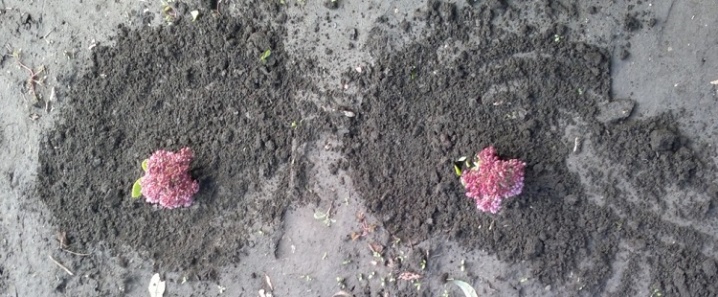
A flower can grow in one place for up to 5 years, after which it can be transplanted or rejuvenated by removing old shoots. Low-growing shrubs are not recommended to be planted next to trees and plants that require abundant watering.
How to take care of it properly?
Sedum is an unpretentious plant, therefore it does not require additional fertilizing and fertilization. Caring for a flower consists in the correct organization of watering and preparation of the shrub for winter. In the absence of precipitation for a long time, it is necessary to moisten the root system of the flower with soft clean water at room temperature. Watering schedule - no more than 1 time per week. It is recommended to transplant sedum every 4-5 years. This will help maintain the ornamental properties of the plant. The transplant is carried out in the spring. The bush is completely dug out of the soil and divided into several parts. Old and diseased shoots are removed, after which healthy shoots are planted as young plants.
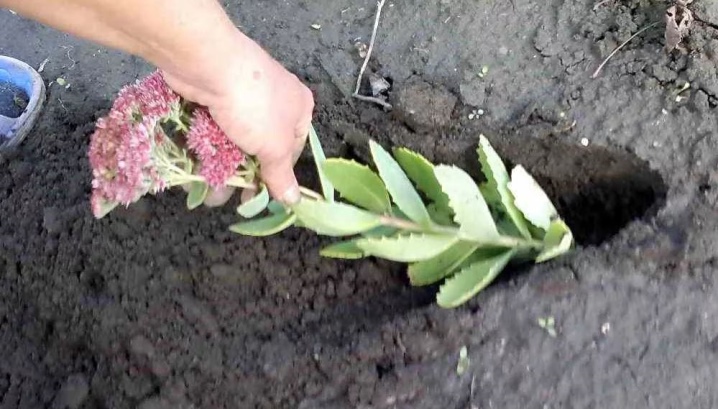
Autumn is the time to prepare for winter. Varieties that are not resistant to frost need to be rejuvenated. It is necessary to cut off all old shoots and add fresh soil under the rhizome. The cut sites are treated with antifungal agents.If the winter is cold, you can dig up the flower and bring it to an unheated room.
Reproduction methods
Sedum tolerates transplanting well and can reproduce both by dividing the bush and in other ways. The most popular methods by which a flower can be propagated.
- Seeds. The most difficult way that requires the necessary skills and experience. Seeds are sown in early spring and placed in a greenhouse until 3 true leaves appear. Seedlings are planted in large open pots, and for 2 years they can be transplanted into open ground. The buds on flowers grown from seeds appear in 3-4 years.

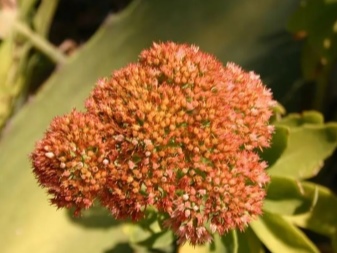
- Cuttings. Cuttings are cut with pruning shears and placed in water until roots appear. Germinated cuttings are planted in well-warmed soil in May-June.
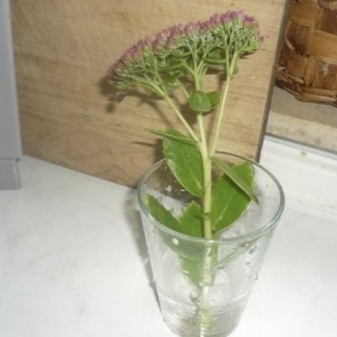

- Division of a root or bush. One of the easiest ways to reproduce an adult plant. The root is dug out of the soil and divided into several parts. Each division should have strong healthy roots and developed buds. In places of cut, the sprouts are treated with a fungicide and dried in the sun for 5-6 hours, after which they are planted in a prepared hole.
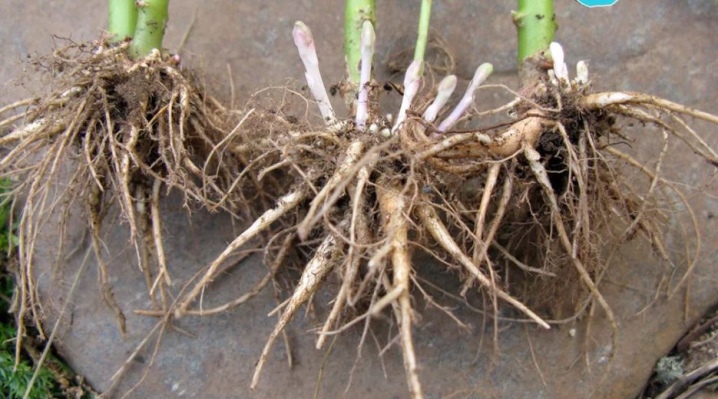
- Cut stems. The method is completely identical to cuttings.
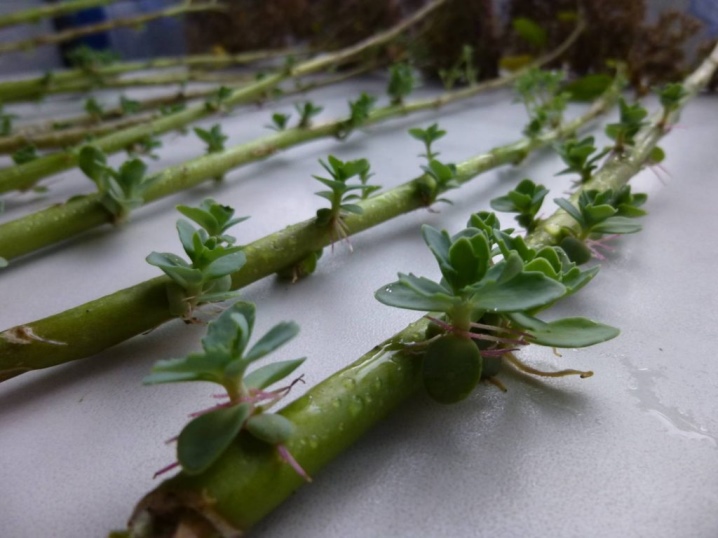
Diseases and pests
The sedum plant is resistant to disease, but it can become infected with a fungal infection due to stagnant water. Infection can also occur from neighboring plants, which must be treated with fungicides in a timely manner. If the buds turn black on one of the bushes, and dark spots appear on the leaves and stems, this is a sign of fungal infection. In this case, it is necessary to dig up the plant and burn it, otherwise all plantings on the site may suffer.
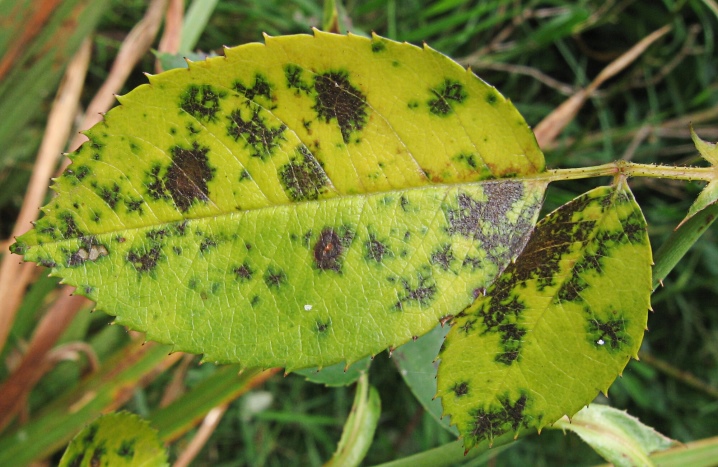
The main enemies of sedum are sawfly caterpillars, aphids, weevils and thrips. Pests are destroyed with systemic insecticides. Insects can be hand-picked onto a white piece of cloth and then incinerated. To avoid the attack of pests, it is necessary to carry out preventive measures in a timely manner using systemic insecticides and fungicidal preparations.
Use in landscape design
Perennial is often used in landscape design to decorate alpine hills, rocky gardens and flower beds. Succulent plant looks good both in single and in group plantings. Low-growing varieties are used to decorate personal plots and borders. Tall lush bushes are suitable for zoning the site and decorating flower beds.
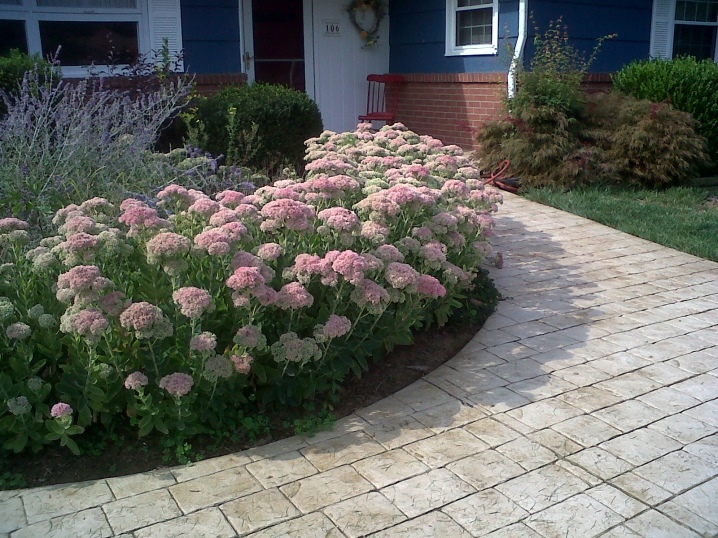
Sedum does not tolerate being close to other ornamental plants. A good combination is represented by various varieties of the same species, as well as cereals, heather and conifers. For decorating the local area, small compact bushes that prefer shade and partial shade are best suited. Large, tall plants are suitable for landscaping alpine and rocky hills, rockeries and decorative borders.
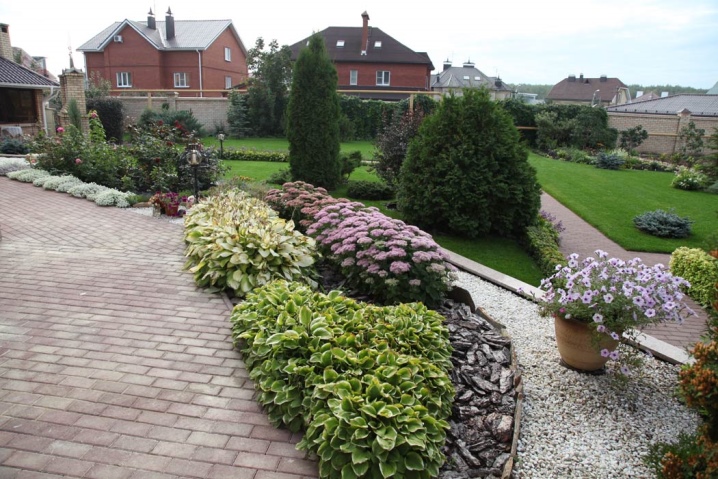
For information on how to properly care for stonecrop, see the next video.






































































































The comment was sent successfully.